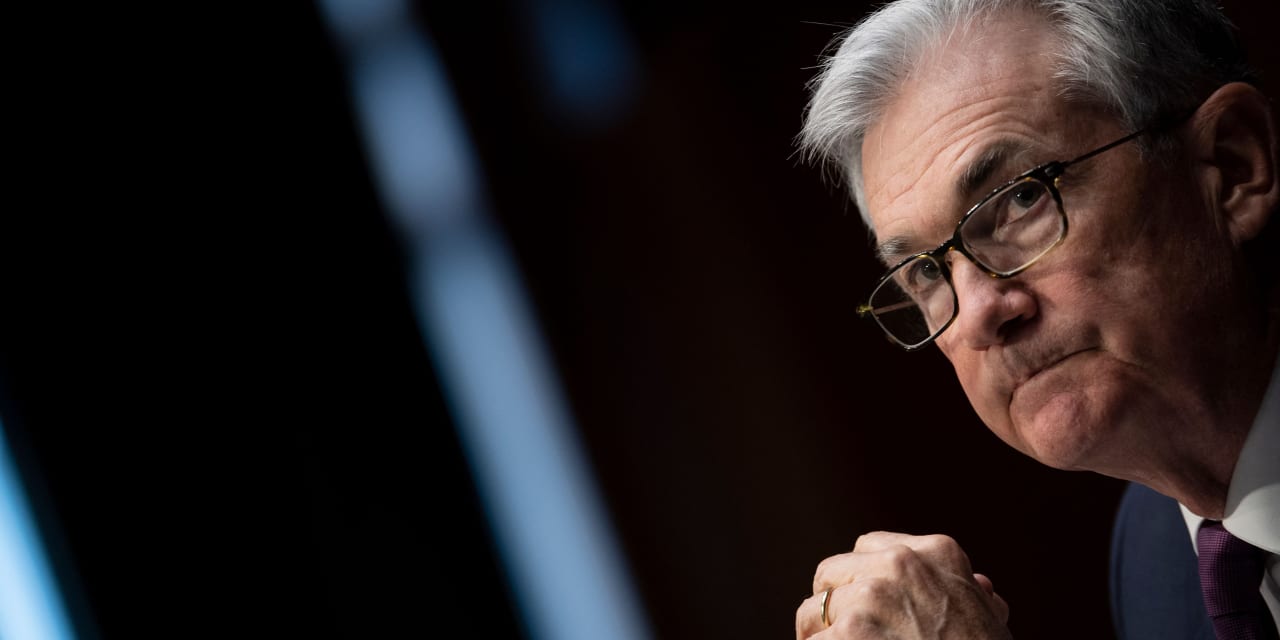It’s all over. A subdued October consumer-price index reading this week ensures the Federal Reserve is done raising interest rates and the next move will be a cut.
Well, maybe.
The Federal Reserve would prefer to wait and see, but there’s “definitely a scenario” in which another rate hike could happen, said Matt Stucky, chief portfolio strategist at Northwestern Mutual Wealth Management Company.
That scenario includes “an acceleration from here in terms of consumer spending or a reversal of improvement in inflation,” he said in a phone interview.
Investors may not fully appreciate the Fed’s resolve to get inflation down, he said, while Fed officials don’t want to allow the possibility of continued resilience in the labor market — and continued resilience of the consumer as a result of that strong labor market — to derail the effort.
That said, after bringing the fed-funds rate from zero to its current range of 5% to 5.25% in short order starting with hikes in March 2022, the Fed will be willing to wait, Stucky said, but emphasized that policy makers still see “job number one” to be restoring price stability.
As for the accelerated stock-market rally, Stucky contends that sticky wage growth above 4% means the Fed is going to keep policy tight until it falls back toward 3%. That’s likely to cause a recession, which will weigh on corporate earnings.
“We’d be cautious,” he said.
Fed-funds futures traders as of Thursday morning had priced in zero chance of a rate hike at the Fed’s Dec. 13 meeting versus a 15% chance of a quarter-point increase a week ago and a roughly one-in-three chance a month ago, according to the CME FedWatch tool.
Moreover, traders have priced in a series of cuts in 2024, beginning in the second quarter.
Steven Ricchiuto, chief economist at Mizuho Americas, told MarketWatch’s Greg Robb on Tuesday that he thinks it is too soon to say the Fed is finished hiking rates.
“The market is jumping the gun. It has jumped the gun repeatedly and it is in the process of doing it again,” Ricchiuto said, pointing to the around 100 basis points, or 1 percentage point, in rate cuts next year priced into the market following the October CPI reading.
Check out: Seventh time a charm? Here are the other six times the market wrongly thought there’d be a dovish pivot.
Meanwhile, economists at Vanguard argue that the near-term bar for additional rate increases is high, but continue to pencil in another quarter-point rise in the fed-funds rate before the Fed is finished. In a Tuesday note, the investment-management giant said it expects the Fed, after delivering a rapid series of rate increases, will proceed cautiously given competing economic and market forces.
They didn’t rule out further rate hikes, but they did lower their forecast for the “terminal,” or peak, fed-funds rate to 5.5% to 5.75 from a range of 5.5% to 6%. The rate currently stands at 5.25% to 5.5%.
The October data was indeed quite likely a source of relief for Fed policy makers. Falling gasoline prices helped ensure a flat monthly reading, while the all-important core, which strips out food and energy, saw a 0.1% rise on Tuesday. That translated into a 4% year-over-year October reading for the core measure, down from 4.1% in September and the trigger for the biggest stock-market rally since January alongside a sharp drop in Treasury yields that saw long rates continue a retreat from 16-year highs.
See: Low ‘supercore’ inflation cheers Wall Street
The S&P 500
SPX
is trading at two-month highs and on the verge of exiting a correction that began in late July as Treasury yields began a sharp run higher. The S&P 500, Dow Jones Industrial Average
DJIA
and Nasdaq Composite
COMP
were on track for a third straight weekly rise.
Read more: S&P 500 close to exiting correction territory as JPMorgan warns risk-reward in stocks appears ‘unattractive’
Needless to say, many investors and economists, while never saying never, argue the bar is now quite high for another Fed rate rise.
“It reinforces our view that the Fed is done; it would now take an horrific CPI report for November, and likely a big rebound in payrolls too, in order to trigger a final hike,” Ian Shepherdson, chief economist at Pantheon Macroeconomics, said after the Tuesday CPI reading.
“We are reluctant to argue that the trend in the core CPI is now 0.2%, and bumps in the road are still likely. But the combination of a full reversal of pandemic-driven supply-side problems, and the likely moderation in demand growth, means that the conditions for sustained disinflation are in place,” he said.
Read: How financial conditions might play into Fed’s thinking after October’s CPI
Read the full article here










